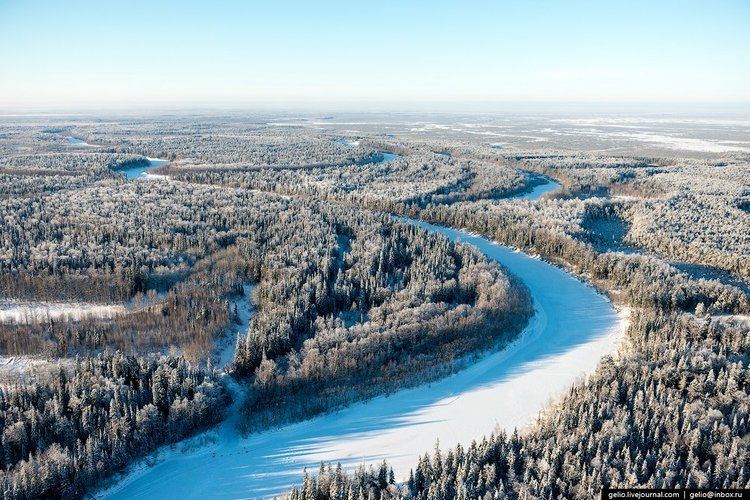Economic region West Siberian | Federal district Urals Established December 10, 1930 Area rank 9th | |
 | ||
Clubs and Teams Points of interest Archeopark, Park Kedrovyy Log, Old Surgut, City Park of Culture and Recr, Surgutskiy Kraevedcheskiy Muzey Destinations Surgut, Khanty‑Mansiysk, Nizhnevartovsk, Nefteyugansk, Kogalym | ||
Khanty-Mansi Autonomous Okrug — Yugra or Khanty-Mansiysk Autonomous Okrug – Yugra (Russian: Ха́нты-Манси́йский автоно́мный о́круг — Югра́, Khanty-Mansiysky avtonomny okrug – Yugra), is a federal subject of Russia (an autonomous okrug of Tyumen Oblast). Population: 1,532,243 (2010 Census).
Contents
- Map of Khanty Mansi Autonomous Okrug Russia
- History
- Geography
- Demographics
- Ethnic groups
- Vital statistics
- Religion
- Transport
- References
Map of Khanty-Mansi Autonomous Okrug, Russia
The people native to the region are the Khanty and the Mansi, known collectively as Ob Ugric people. The local languages, Khanty language and Mansi language, enjoy special status in the autonomous okrug and along with their distant relative Hungarian are part of the Ugric branch of the Finno-Ugric languages. Russian remains the only official language.
In 2012, the majority (51%) of the oil produced in Russia comes from Khanty–Mansi Autonomous Okrug, giving the region great economic importance.
History
The okrug was established on December 10, 1930, as Ostyak–Vogul National Okrug (Остя́ко-Вогу́льский национа́льный о́круг). In October 1940, it was renamed the Khanty-Mansi National Okrug. In 1977, along with other national okrugs of the Russian SFSR, it became an autonomous okrug (Khanty-Mansi Autonomous Okrug). The administrative center is Khanty-Mansiysk. In 2003, the word "Yugra" was appended to the official name.
Geography
The okrug occupies the central part of the West Siberian Plain.
Principal rivers include the Ob and its tributary the Irtysh.
The northeasterly line of equal latitude and longitude traverses the Khanty–Mansi Autonomous Okrug.
Demographics
Population: 1,532,243 (2010 Census); 1,432,817 (2002 Census); 1,268,439 (1989 Census).
Khanty–Mansi Autonomous Okrug has an area of 523,100 km², but the area is sparsely populated. The administrative center is Khanty-Mansiysk, but the largest cities are Surgut, Nizhnevartovsk, and Nefteyugansk.
Ethnic groups
The indigenous population (Khanty, Mansi, and Nenets) is only 2.2% of the total population in the Khanty-Mansi Autonomous Okrug. The exploitation of natural gas in Khanty-Mansi Autonomous Okrug has attracted immigrants from all over the former Soviet Union. The 2010 Census counted twenty-five ethnic groups of more than two thousand persons each. The ethnic composition is as follows:
Population of Khanty-Mansi Autonomous Okrug:
Historical population figures are shown below:
Vital statistics
Source: Russian Federal State Statistics ServiceReligion
According to a 2012 official survey 38.1% of the population of Yugra adheres to the Russian Orthodox Church, 5% are unaffiliated generic Christians, 1% of the population adheres to the Slavic native faith (Rodnovery) or to Khanty-Mansi native faith. Muslims (mostly Tatars) constitute 11% of the population. In addition, 23% of the population declares to be spiritual but not religious, 11% is atheist, and 10.9% follows other religions or did not give an answer to the question.
Transport
In Khanty-Mansi Autonomous Okrug, the primary transport of goods is by water and railway transport; 29% is transported by road, and 2% by aviation. The total length of railway tracks 1,106 km. The length of roads is more than 18,000 km.
